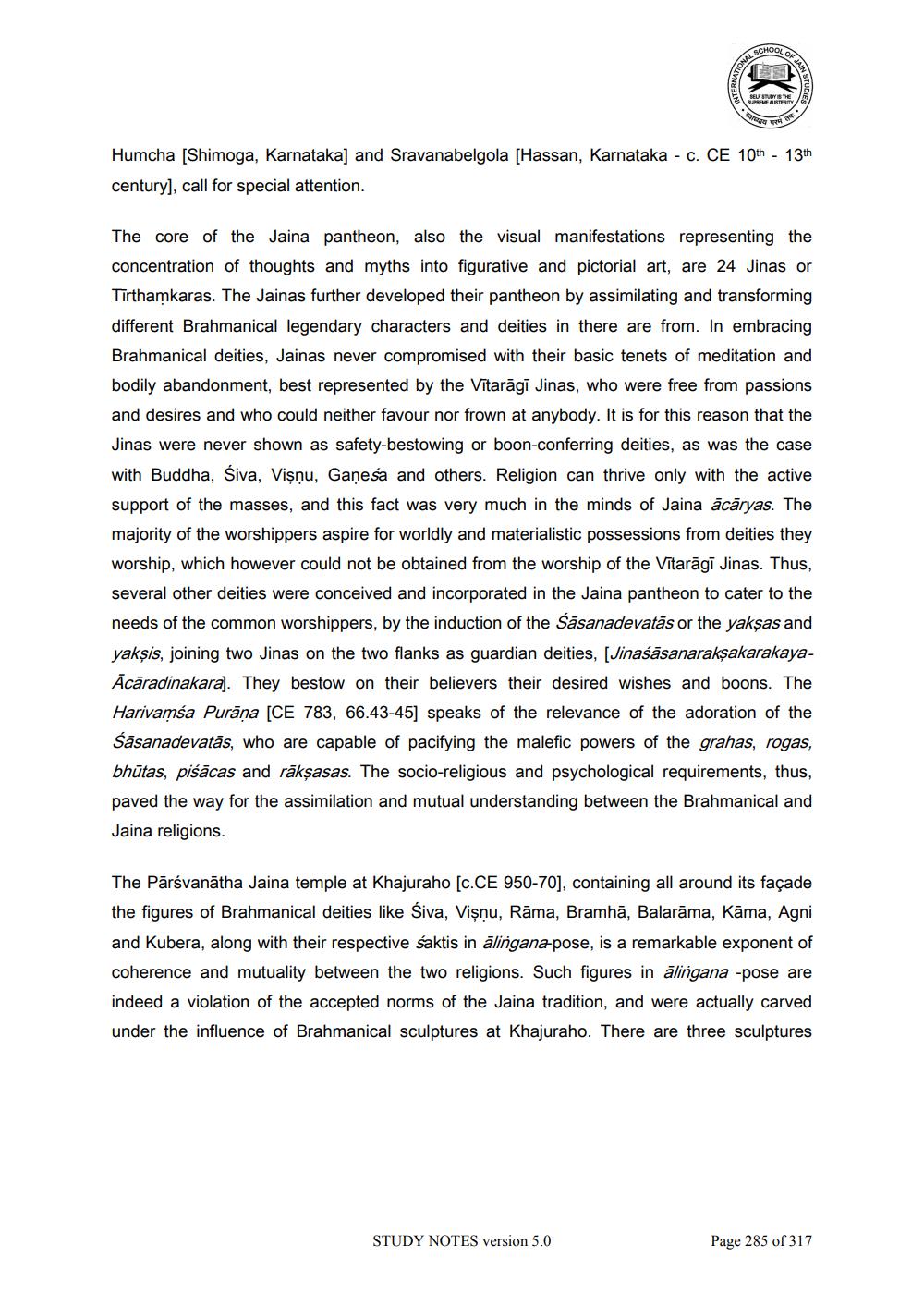________________
Humcha [Shimoga, Karnataka] and Sravanabelgola [Hassan, Karnataka - C. CE 10th - 13th century), call for special attention.
The core of the Jaina pantheon, also the visual manifestations representing the concentration of thoughts and myths into figurative and pictorial art, are 24 Jinas or Tīrthamkaras. The Jainas further developed their pantheon by assimilating and transforming different Brahmanical legendary characters and deities in there are from. In embracing Brahmanical deities, Jainas never compromised with their basic tenets of meditation and bodily abandonment, best represented by the Vitarāgi Jinas, who were free from passions and desires and who could neither favour nor frown at anybody. It is for this reason that the Jinas were never shown as safety-bestowing or boon-conferring deities, as was the case with Buddha, śiva, Vişnu, Gaņeśa and others. Religion can thrive only with the active support of the masses, and this fact was very much in the minds of Jaina ācāryas. The majority of the worshippers aspire for worldly and materialistic possessions from deities they worship, which however could not be obtained from the worship of the Vitarāgi Jinas. Thus, several other deities were conceived and incorporated in the Jaina pantheon to cater to the needs of the common worshippers, by the induction of the Sasanadevatās or the yakşas and yaksis, joining two Jinas on the two flanks as guardian deities, (JinaśāsanarakşakarakayaĀcāradinakara]. They bestow on their believers their desired wishes and boons. The Harivamsa Purana (CE 783, 66.43-45] speaks of the relevance of the adoration of the Śāsanadevatās, who are capable of pacifying the malefic powers of the grahas, rogas, bhūtas, piśācas and rākşasas. The socio-religious and psychological requirements, thus, paved the way for the assimilation and mutual understanding between the Brahmanical and Jaina religions.
The Pārsvanātha Jaina temple at Khajuraho (c.CE 950-70), containing all around its façade the figures of Brahmanical deities like Śiva, Vişnu, Rāma, Bramhā, Balarāma, Kāma, Agni and Kubera, along with their respective saktis in alingana pose, is a remarkable exponent of coherence and mutuality between the two religions. Such figures in alingana -pose are indeed a violation of the accepted norms of the Jaina tradition, and were actually carved under the influence of Brahmanical sculptures at Khajuraho. There are three sculptures
STUDY NOTES version 5.0
Page 285 of 317




